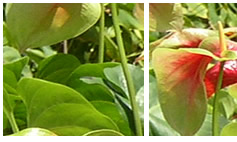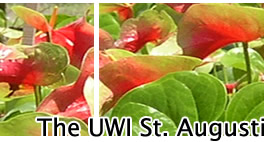 |
 |
||||
 |
 |
 |
|||
|
|
Weaknesses and threats Initial efforts to establish an export oriented anthurium industry in the Caribbean in the 1980s and the 1990s was based on imported hybrids from the Netherlands. The early successes in the region were followed by a general demise of the industry due to varying reasons, the most important being the high cost of imported planting material, poor adaptability of cultivars to Caribbean conditions, susceptibility of imported cultivars to bacterial blight and bacterial leaf spot diseases, lack of novelty, scale of production or the organization necessary to penetrate into new markets. Only the more progressive farms were able to develop innovative solutions to the problems that allowed them to survive in spite of the decline. As a result the markets have shrunken and the industry in a state of disarray and inertia.
|
© 2004 - The University of The West Indies. All rights reserved. Disclaimer | Privacy Statement Telephone: (868) 662-2002 Fax: (868) 663-9684 |
|